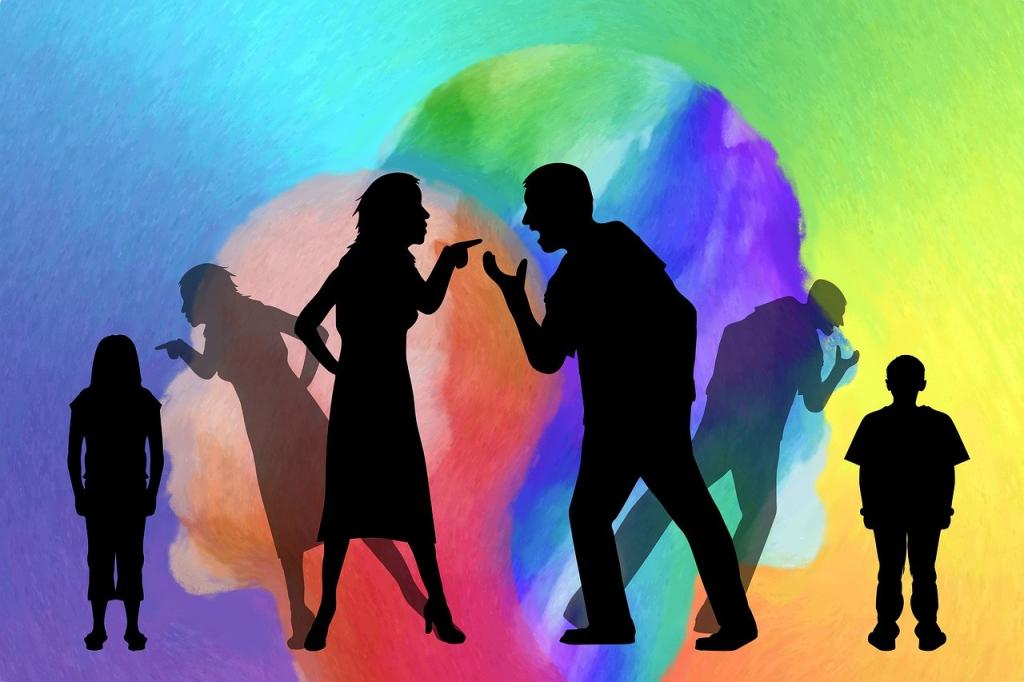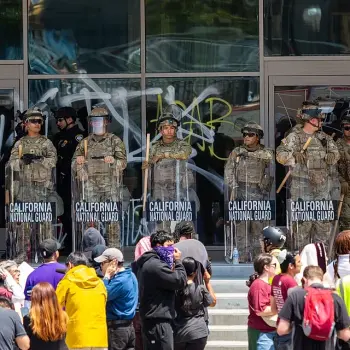Americans, we keep hearing, are polarized. But it’s worse than that. There is polarization in some of the very groups we are polarized into.
Southern Baptists are conservative theologically, but they are polarized over social justice issues. Feminists are polarized over transgenderism, with “allies” of that movement bitterly contending with Transgender Exclusionary Radical Feminists (TERFS), who deny that men can assume the identity of women.
Of course, feuding is nothing new within interest groups, congregations, and families. Today, much of this is driven by our political polarization.
Democrats and Republicans seem to be completely alienated from each other. But we are also polarized within our political parties. That is to say, members of each party are increasingly alienated with each other.
Pro-Trump Republicans are fighting with “establishment” Republicans who want to move forward without the former president. Meanwhile, “Progressive” Democrats are fighting with “Moderate” Democrats, to the point of paralyzing President Biden’s agenda.
Gerald F. Seib writes in the Wall Street Journal that we actually have, in the words of his title, “Four Parties, Zero Trust“:
The Democratic Party today really is two parties: the progressive version of the party, personified by Sen. Bernie Sanders, and the moderate version, personified by Sen. Joe Manchin. This split is hardly new, but now the two sides are roughly equal in congressional strength and leverage. Rather than bringing the two sides together, this balance of power has laid bare their differing agendas and priorities and driven them apart, and Mr. Biden has failed to bridge the gap.
This split is mirrored on the other side of the aisle, where the Republican Party also effectively is split in two. There remains the traditionally conservative GOP, which many Republicans refer to as the “governing part of the party,” because it is interested in advancing its agenda through conventional governing channels. Its power now is at least offset, and probably eclipsed, by the populist, nationalist version of the Republican Party, which is animated more by cultural fights with the left than by traditional conservative policy goals. This part of the party often seems more interested in blowing up the system than working within it. . . .
The divides are made harder to bridge because there not only is mistrust between the two parties, but now an almost equal measure of mistrust between the two factions within each party.
On the Left:
On the Right:
(5) Faith and Flag Conservatives. Pew describes them as “intensely conservative in all realms; they are far more likely than all other typology groups to say government policies should support religious values and that compromise in politics is just ‘selling out on what you believe in.’” They constitute 10% of the population.
(6) Committed Conservatives. They are also conservative on just about everything, but they have “a somewhat softer edge,” especially when it comes to immigration and American exceptionalism. They number 7%.
(7) Populist Right. These Americans “have less formal education than most other typology groups and are among the most likely to live in rural areas, are highly critical of both immigrants and major U.S. corporations.” They number 11%.
(8) Ambivalent Right. The youngest and least conservative group among Republicans. They hold conservative views about limited government, the economy, race, and gender. But they favor legal abortion, support the legalization of marijuana, and want Trump to go away. They number 12%.
Non-aligned
(9) Stressed Sideliners. This group has a mixture of liberal and conservative beliefs, but little political engagement. They just aren’t interested in political issues and hardly ever so much as vote. They comprise 15% of the public.
I find this interesting, but also puzzling. For example, which of these factions support big corporations? Someone obviously does. And where would you put Libertarians? And I’m not sure that the 41% of Americans who are Independents are adequately accounted for here. My sense is that the typology is shaped by the questions asked, and that asking other questions might result in different groupings.
But it’s certainly true that there are many possible political positions–more than these, actually–and yet we try to make them all fit on the Procrustean Bed of a two-party system.
In contrast, parliamentary systems, such as most of the world’s democracies, have multiple parties, each with its own distinct ideology. (Australia has ten national parliamentary parties, plus 32 non-parliamentary parties that seek representation and agitate for their views. These include the Australian Christian party, the No 5G Party, the Shooters, Fishers, and Farmers Party, and the Love Australia or Leave party. In addition, each state has a plethora of parties of its own.)
Parliamentary systems, however, work by forming coalitions of the different parties. Whichever faction can assemble a majority of representatives of the different parties can choose a Prime Minister and assemble a government, whose ministries are usually led by members of the various factions in the coalition. This system thus encourages both diversity of opinion and compromise. At least that’s the theory. Whereas our two-party system encourages polarization and inter-party infighting. And yet, historically things have gotten done just the same.
Later: The possibility of overcoming at least some of our current polarization in politics, through new coalitions and unifying issues.
Image by Gerd Altman via Pixabay














